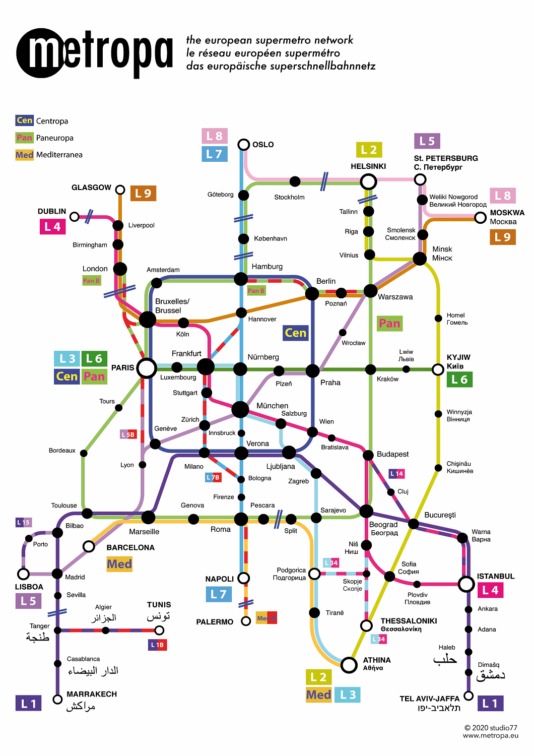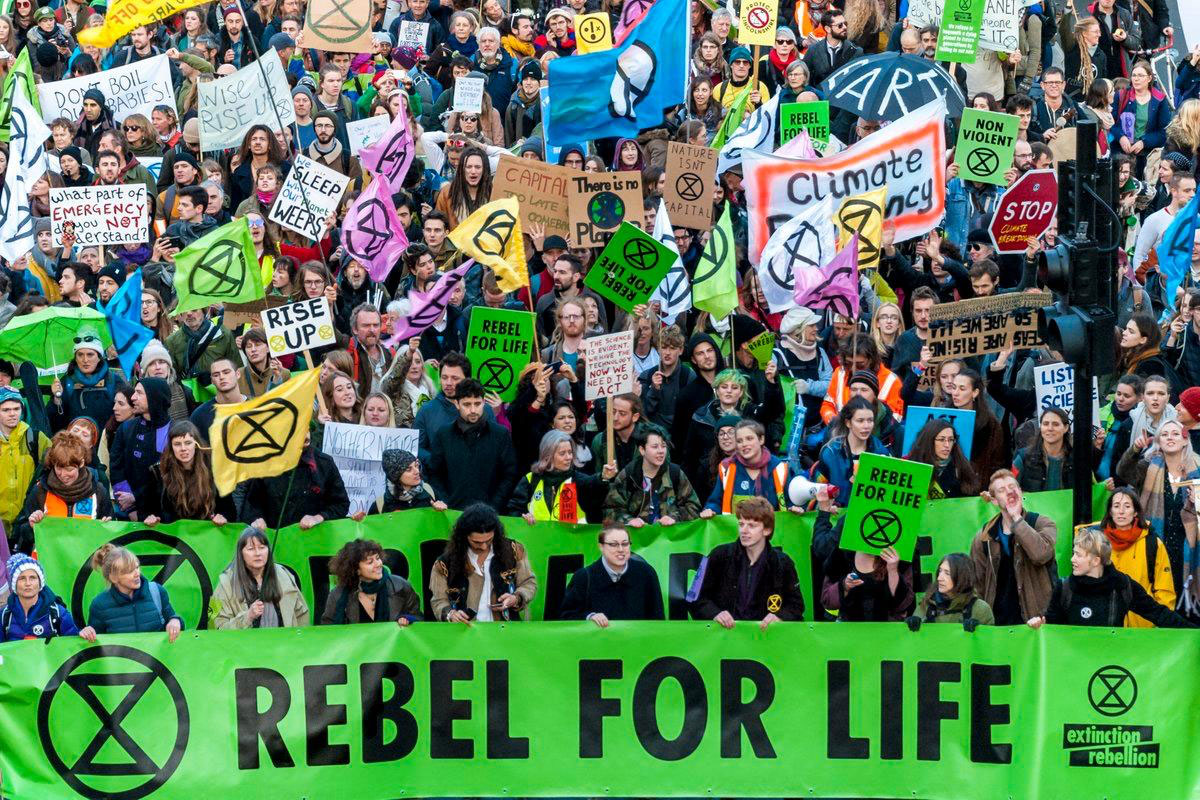- About
- Topics
- Story
- In-Depth
- Picks
- Opinion
- News
- Donate
- Signup for our newsletterOur Editors' Best Picks.Send
Read, Debate: Engage.
| June 26, 2020 | |
|---|---|
| topic: | Innovation |
| tags: | #Brexit, #Europe, #urban transport, #maglev train, #european identity, #high speed trains |
| located: | Austria, Germany, France, Belgium, United Kingdom, Georgia, Turkey, Israel, Finland, Ireland, Spain, Portugal, Luxembourg, Switzerland, Croatia, Italy, Morocco, Russia, Estonia, Greece, Romania, Denmark, Sweden, Poland, Slovakia, Slovenia, Macedonia, The former Yugoslav Republic of, Albania, Lithuania, Belarus, Latvia, Netherlands, Ukraine |
| by: | Frank Odenthal |
Plans to expand the European railway network are ever-increasing, but Vienna-based artist and musician Stefan Frankenberger proposes another path: a completely new, pan-European network of high-speed trains based on alternative drive systems: Metropa.
Sounds like science fiction? Perhaps. But Frankenberger has found a way to pour his vision of mobility into a form that makes it appear like something ordinary and that shows its appeal to everyone at first glance: A schematic illustration of a rail network as we see it day in day out in our metros, subways and trams of almost every large or medium-sized city.
Non-stop from Dublin to Istanbul, from Helsinki to Athens or from Tel Aviv to Marrakech: just a utopia? Frankenberger's illustration is just going viral on social media. FairPlanet asked him for details.
FairPlanet: Mr. Frankenberger, you describe your Metropa project as an “art-and-peace” project. What does that mean?
Stefan Frankenberger: It all started as an artistic interpretation of a vision of what our world could look like in fifty or maybe a hundred years. I used graphic patterns that everyone is already familiar with in everyday life, namely the illustration of local public transport networks, such as those known from the metro in Paris, the U-Bahn in Berlin or the subway in New York. With this schematic picture of actually very complex systems, I wanted to suggest a future that can be easily understood by everyone. With some futuristic design, the project would have looked more like true science fiction, I think. But this way it looks almost ordinary, somehow familiar, although it’s a vision so far.
How do you want to turn the vision into a reality?
It's like the carrot that dangles in front of the donkey's nose and is supposed to animate him to go in a certain direction. Metropa is the anticipation of a future of Europe in which inner-European air travel and motorised individual traffic have no future. I am not an engineer myself, nor a politician, nor any rich mogul. I'm just providing ideas that people who do have the power or means to decide about it should take up. But the more people asking for it, as in: Demanding it, the greater the pressure on those who can decide to implement these ideas.
You live in Vienna, the capital of Austria. Have you been in contact with such decision-makers, for example at ÖBB, the state-owned railway operator in Austria?
I got in touch with ÖBB, but for them Metropa was probably just a dream of the future, a utopia. I also knocked on the door of Siemens once, the big German company that is really busy in rail transport; they pretended to be interested, but nothing more. And they never contacted me again afterwards. That didn’t come as a big surprise though.
Why’s that?
With the conventional drive system for rail transport, i.e. with iron wheels and so on, we will soon reach our limits when it comes to speed. Japan's flagship train Shinkansen makes around 280 km/h, the French TGV and the German ICE reach around 300 km/h on suitable sections, but then it's over. But the aim must be to make air traffic obsolete within Europe. In my opinion, this requires speeds of 400 to 500 km/h. Planes are still faster though, but if you add the time to get to the airports, which are typically outside of the city centres, the check-in times and the waiting times for luggage claims, then new super-fast trains that only stop in the very city centres , would suddenly be competitive.
If it doesn't work with conventional rail transport technology, what else could work?
We actually need a completely new, completely different infrastructure. And new drive systems. That is why, from today's perspective, Metropa still seems like a utopia. We rely on the innovative strength of engineers and scientists. And we’ve got innovative technology already. Just check out the maglev trains…
The magnetically levitated monorail trains that were developed by German companies Siemens and ThyssenKrupp as “Transrapid” and introduced in 1991…
Exactly. But there has never been more than one test track in Germany. The only magnetic levitation train in regular service was put into operation in Shanghai in 2003.
By the way, I talked to some experts about the costs for Metropa if you wanted to build a completely new transport infrastructure, i.e. a completely new route network for maglev trains. The result was 1.3 quadrillion euros!
This is a digit with fifteen zeros.
Yes. But of course that would not be due immediately, as the whole thing certainly is more of a generation project.
That sounds utopian indeed.
You see, we are currently living in Corona times and everyone is talking about economic stimulus programmes to boost the economy. A mega project like Metropa would just be spot on. A huge investment project! And, as I said, Metropa will not be created at once. If we start with Centropa, i.e. the ring train that connects Paris, Milan, Prague, Berlin, Hamburg and Amsterdam, i.e. Central Europe, we could already have super high-speed trains in the form of magnetic levitation trains operating in a circles there. And from there we continue to expand the network piece by piece, depending on the financial capabilities.
Who else could be interested in getting involved as an investor besides governments and the today‘s railway operators?
Well, if we assume that it will no longer be acceptable to fly within Europe, it could be interesting for airlines, for example, to see superfast rail networks as a new playground for their business. Instead of pumping large amounts of money into their aircrafts and related infrastructure, they could invest in a magnetic levitation monorail network.
The Metropa website says, citizens and visitors would turn into admirers. What does that mean?
Metropa should be a project by citizens for citizens. Citizens pay it with their taxes, so they should not only use it, they should also be proud of it. And rightly so! A mega project like Metropa, who knows, it might have the rank of a Weltwunder, a “wonder of the world” one day, if you will. That would be something the citizens of Europe could really be proud of. And there is even more to it: this project would have something identity-creating. That‘s something that Europe lacks today. Europe should be more than just an association of politicians and bureaucrats, more than just an economic area.
And even beyond, including the Middle East and the Maghreb…
Europe has always relied on transit and exchange and communication with its neighbours, be it from Asia or Africa. And where does Europe end anyway? Is Georgia part of Europe? Where does Russia stop being Europe? With the Maghreb, for example, we Europeans have a cultural exchange that goes back to ancient times; not to mention Turkey and the Middle East.
Was there a certain moment when you came up with the idea for Metropa?
Yes, as a matter of fact there was. It was in 2010 and I was on a car trip from Vienna across the Hungarian border with a friend. We had time to chat, and my friend told me about the high-speed train in Japan that has been in service for decades and that moves millions of people reliably and safely every day. And I thought why should something like that would not be possible in Europe. I took a pen and started connecting cities on a map. Yes, that's how it started. I then continued drawing that map over the years until I now have the finished it, the Metropa railway network. And I think it is important to further spread that graphic, because it is so easily accessible. We have to get the idea in the hearts and minds of as many people as possible! That's why you can get it as a poster and a postcard and printed on T-shirts and bags in our shop.
You are one of the initiators of the Peace Tram / Friedensbim, which sends a tram full of artists and musicians from all over the world on a ride along the ring road in the centre of Vienna for a whole day. Could that project be seen as an anticipation of the idea of Metropa on a small scale?
In a way, probably. The Peace Tram is based on the same philanthropic ideas that are behind Metropa, namely to promote intercultural exchange, to create spaces for people to get to know each other, and that are open to everyone.
Stefan Frankenberger, thank you very much for this interview.
Stefan Frankenberger was born in the southern German city of Rosenheim in 1977 and has been living in Vienna as a freelance artist since 1999. He is a musician, music producer, artist, author and activist. His most recent work is the English version of the audio book “Yours, Lise” about the physicist Lise Meitner; his next album “candy hap insanity” is about to be released in autumn ’20.
By copying the embed code below, you agree to adhere to our republishing guidelines.



